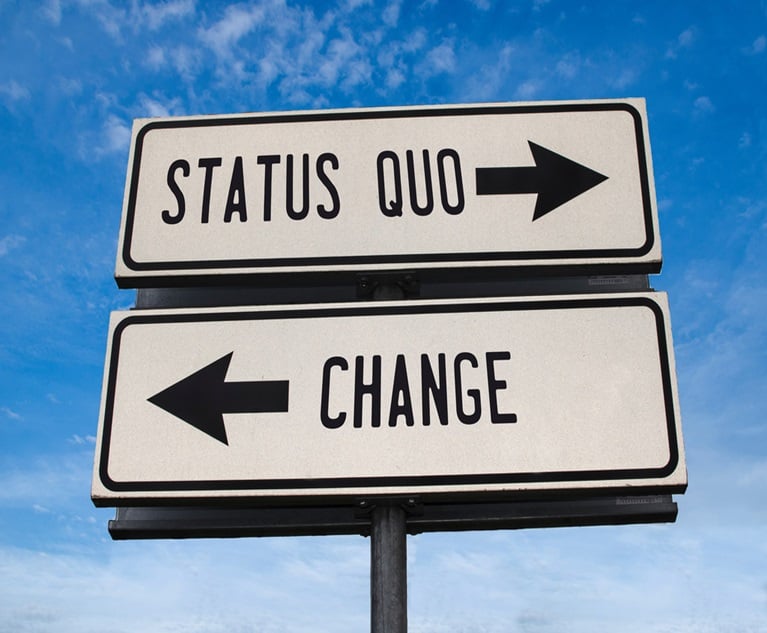In claims management, preventive measures are still the best wayto control costs. However, claims are going to occur, so having theright plan in place to manage them becomes critical.
|A client's claims-management functions can have significantimpact on how insurers view the risk during the underwritingprocess. For property, liability and auto claims,claims-management practices can result in higher or lowerpremiums—and for workers' compensation, they can result in higheror lower modifications as well as increases or decreases in theapplication of scheduled credits.
|Click next for tips on how clients should respond to property,casualty and workers' comp claims.
|FILING A MAJOR PROPERTYCLAIM

After a claim has occurred, the client should protect theinsured property by securing the scene to prevent any furtherdamage. The client must then make the following assessments:
- Can the electricity be used? Are the telephones operational?Can the client transfer business calls to cell phones if necessary?Can the product be salvaged?
- Part of the insured's contingency plan should include a list ofemergency restoration companies, and 24-hour contact numbers.
- The client should take photographs of any and all damage. Apicture is worth a thousand words and perhaps thousands ofdollars.
After this initial assessment, a more detailed report will benecessary. It should be clear, concise and include all necessaryinformation (cause, mitigation plans, analysis of businessinterruption and all costs incurred).
|WHEN CASUALTY CLAIMS ARISE

Casualty claims can encompass a host of situations, from bodilyinjury to property damage. The key to managing casualty claims isto:
- Collect information
- Be courteous
- Show empathy
- Mitigate to the best of your ability and everyone'ssafety
- Do not admit fault or not-at-fault.
- Identify witnesses
- Document the situation
- Record your own assessment andrecollection
It is important to review what types of coverage the client hasin place. For example, is there coverage for crisis management,advertising or other public notifications? Is supplementalcoverage, such as for cyber liability, needed? What kind of risktransfer do the client's safety training and proceduresengender?
|Casualty claims potentially involve both emotional and physicalinjury. Bear both in mind when dealing with the client.
|WORKERS' COMP CLAIMS

When adopting best practices in Workers' Compensation (WC)claims management, even simply identifying where to start can beintimidating for employers if they rely solely on their claimsadministrator. To achieve best outcomes, employers should take anactive role in developing internal best practices and align themwith a claims administrator who supports the samephilosophy.
|The key elements to a successful WC claims-management programwill have both pre- and post-injury components. It's said that “thebest WC claim is the one that never happens,” therefore, the firststep is avoiding claims through safety and health programs. Thesecond is mitigating costs once a claim occurs.
|With medical expenses accounting for more than 60 percent of aWC claim, injury strategies must address this cost driver throughprograms that keep employees healthy.
|Fundamental Pre-Injury Initiatives: Prevention andPreparation
- Build an integrated safety and wellness program toavoid injuries and illnesses. Take a holistic approach and adoptcommunication programs that provide awareness and training onprevention at home, and at work.
- Create a company-specific claim management workflowand procedures on what to do when an injury occurs.
- Identify quality medical providers and establishrelationships. Give the medical providers tools to assist them indeveloping a productive return-to-work plan.
- Explore options for a) Injury Prevention, such asergonomic evaluations and education; b) Early Medical Intervention,such as RN triage to determine if the incident is best cared for byself-care, clinic or hospital; and c) On-Site Medical Treatment,including first aid and physical therapy.
Fundamental Post-Injury Initiatives
- Track claims to identify loss trends and makeimprovements to safety programs aimed at reducing theseinjuries.
- Immediately report all injuries and stay incommunication with the adjuster throughout the life of theclaim.
- Investigate accidents to determine the cause(s) ofinjury and implement plans to abate exposure.
- Keep in touch with the injured worker, address anyquestions s/he may have, and create a mutually agreed-uponreturn-to-work plan with the physician, employee andemployer.
- Conduct regular claim reviews, with a focus onachieving the best outcome and closure. Request participation fromall parties, including legal counsel, case manager andinvestigator, to see how each party can affect the outcome.
In California, SB 863 has attempted to address many componentsthat today hinder best claim outcomes and increase claim costs.However, it will take time to fully implement these changes and toweigh the benefits to employers, employees and carriers. In themeantime, the best advice is to build your own best practices withthe right claims-management partners.
|For all types of claims, an insured's preparedness can beimproved by considering the following:
- In case of disaster, do you have a contingency plan, regardlessof whether or not the occurrence is covered?
- Do your existing safety measures reduce the chance ofloss?
- What is the estimate of the probable maximum loss; does yourcurrent insurance cover that loss?
- Do you have a claims management team? If not, it is imperativeto organize one immediately. The team should fit the size andnature of your organization, and include the business owneror senior officer; safety manager; risk manager; CFO; insurance broker; accountant; and if you are in a consumer-facingindustry, your communications team.
Want to continue reading?
Become a Free PropertyCasualty360 Digital Reader
Your access to unlimited PropertyCasualty360 content isn’t changing.
Once you are an ALM digital member, you’ll receive:
- All PropertyCasualty360.com news coverage, best practices, and in-depth analysis.
- Educational webcasts, resources from industry leaders, and informative newsletters.
- Other award-winning websites including BenefitsPRO.com and ThinkAdvisor.com.
Already have an account? Sign In
© 2024 ALM Global, LLC, All Rights Reserved. Request academic re-use from www.copyright.com. All other uses, submit a request to [email protected]. For more information visit Asset & Logo Licensing.








